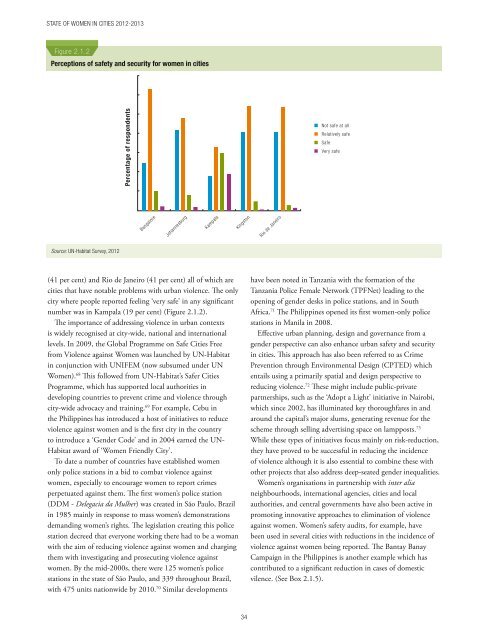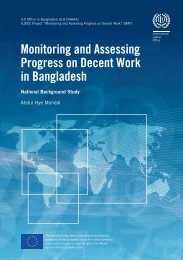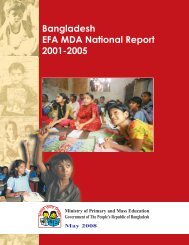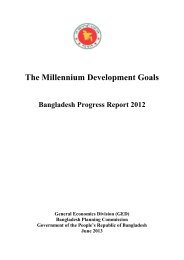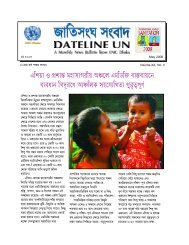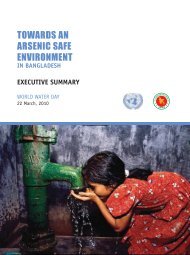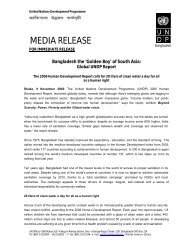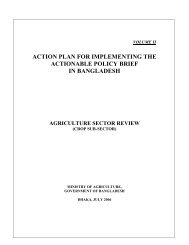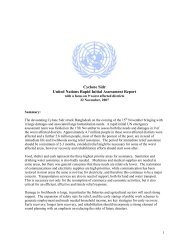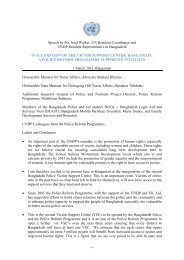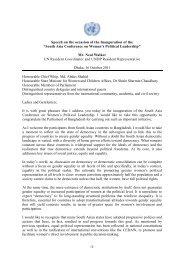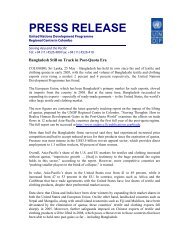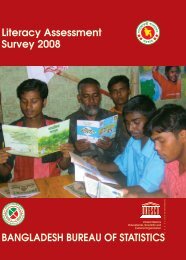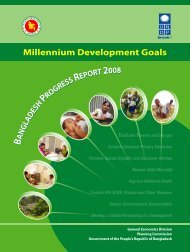STATE OF WOMEN IN CITIES 2012-2013 - UN-Habitat
STATE OF WOMEN IN CITIES 2012-2013 - UN-Habitat
STATE OF WOMEN IN CITIES 2012-2013 - UN-Habitat
You also want an ePaper? Increase the reach of your titles
YUMPU automatically turns print PDFs into web optimized ePapers that Google loves.
<strong>STATE</strong> <strong>OF</strong> <strong>WOMEN</strong> <strong>IN</strong> <strong>CITIES</strong> <strong>2012</strong>-<strong>2013</strong><br />
Figure 2.1.2<br />
Perceptions of safety and security for women in cities<br />
Percentage of respondents<br />
Not safe at all<br />
Relatively safe<br />
Safe<br />
Very safe<br />
Bangalore<br />
Johannesburg<br />
Kampala<br />
Kingston<br />
Rio de Janeiro<br />
Source: <strong>UN</strong>-<strong>Habitat</strong> Survey, <strong>2012</strong><br />
(41 per cent) and Rio de Janeiro (41 per cent) all of which are<br />
cities that have notable problems with urban violence. The only<br />
city where people reported feeling ‘very safe’ in any significant<br />
number was in Kampala (19 per cent) (Figure 2.1.2).<br />
The importance of addressing violence in urban contexts<br />
is widely recognised at city-wide, national and international<br />
levels. In 2009, the Global Programme on Safe Cities Free<br />
from Violence against Women was launched by <strong>UN</strong>-<strong>Habitat</strong><br />
in conjunction with <strong>UN</strong>IFEM (now subsumed under <strong>UN</strong><br />
Women). 68 This followed from <strong>UN</strong>-<strong>Habitat</strong>’s Safer Cities<br />
Programme, which has supported local authorities in<br />
developing countries to prevent crime and violence through<br />
city-wide advocacy and training. 69 For example, Cebu in<br />
the Philippines has introduced a host of initiatives to reduce<br />
violence against women and is the first city in the country<br />
to introduce a ‘Gender Code’ and in 2004 earned the <strong>UN</strong>-<br />
<strong>Habitat</strong> award of ‘Women Friendly City’.<br />
To date a number of countries have established women<br />
only police stations in a bid to combat violence against<br />
women, especially to encourage women to report crimes<br />
perpetuated against them. The first women’s police station<br />
(DDM - Delegacia da Mulher) was created in São Paulo, Brazil<br />
in 1985 mainly in response to mass women’s demonstrations<br />
demanding women’s rights. The legislation creating this police<br />
station decreed that everyone working there had to be a woman<br />
with the aim of reducing violence against women and charging<br />
them with investigating and prosecuting violence against<br />
women. By the mid-2000s, there were 125 women’s police<br />
stations in the state of São Paulo, and 339 throughout Brazil,<br />
with 475 units nationwide by 2010. 70 Similar developments<br />
have been noted in Tanzania with the formation of the<br />
Tanzania Police Female Network (TPFNet) leading to the<br />
opening of gender desks in police stations, and in South<br />
Africa. 71 The Philippines opened its first women-only police<br />
stations in Manila in 2008.<br />
Effective urban planning, design and governance from a<br />
gender perspective can also enhance urban safety and security<br />
in cities. This approach has also been referred to as Crime<br />
Prevention through Environmental Design (CPTED) which<br />
entails using a primarily spatial and design perspective to<br />
reducing violence. 72 These might include public-private<br />
partnerships, such as the ‘Adopt a Light’ initiative in Nairobi,<br />
which since 2002, has illuminated key thoroughfares in and<br />
around the capital’s major slums, generating revenue for the<br />
scheme through selling advertising space on lampposts. 73<br />
While these types of initiatives focus mainly on risk-reduction,<br />
they have proved to be successful in reducing the incidence<br />
of violence although it is also essential to combine these with<br />
other projects that also address deep-seated gender inequalities.<br />
Women’s organisations in partnership with inter alia<br />
neighbourhoods, international agencies, cities and local<br />
authorities, and central governments have also been active in<br />
promoting innovative approaches to elimination of violence<br />
against women. Women’s safety audits, for example, have<br />
been used in several cities with reductions in the incidence of<br />
violence against women being reported. The Bantay Banay<br />
Campaign in the Philippines is another example which has<br />
contributed to a significant reduction in cases of domestic<br />
vilence. (See Box 2.1.5).<br />
34


